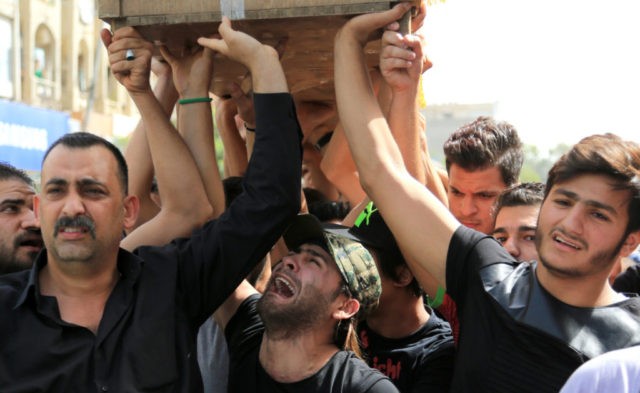Islamic State claimed responsibility for a suicide attack in the Afghan capital Kabul on Saturday that killed at least 61 people and wounded more than 200 when it tore through a demonstration by members of the mainly Shia Hazara minority.
Graphic television footage from the site of the attack showed many dead bodies lying on the bloodied road, close to where thousands of Hazara had been demonstrating over the route of a planned multimillion dollar power line.
“Two fighters from Islamic State detonated explosive belts at a gathering of Shi’ites in the city of Kabul in Afghanistan,” said a brief statement on the group’s Amaq news agenc
The attack was the worst in months and if confirmed as the work of Islamic State, would represent a major escalation for a group which has hitherto been largely confined to the eastern province of Nangarhar.
The explicit reference to the Hazara’s Shia religious affiliation also represents a menacing departure for Afghanistan, where the bloody rivalry between Sunni and Shia typical of Iraq has been relatively rare, despite decades of war.
The Persian-speaking Hazara, estimated to make up about 9 percent of the population, are Afghanistan’s third-largest minority but they have long suffered discrimination and thousands were killed under Taliban rule.
The Taliban, a fierce enemy of Islamic State, had issued a statement denying any involvement. “We would never take part in any incident that divides the Afghan people,” Taliban spokesman Zabihullah Mujahid said.
The attack succeeded despite tight security which saw much of the city center sealed off with stacks of shipping containers and other obstacles and helicopters patrolling overhead.
It was the deadliest bombing seen in Kabul since April, when more than 60 people were killed in an attack on offices used by the security services. That was considered the worst single incident of its kind in Kabul since 2011.
Mohammad Ismail Kawousi, a spokesman for the ministry of public health, said at least 61 dead and 207 wounded had been taken to nearby hospitals.
Saturday’s demonstrators had been demanding the 500 kV transmission line from Turkmenistan to Kabul be rerouted through two provinces with large Hazara populations, an option the government says would cost millions and delay the badly needed project by years.
But the resentment felt by many Hazaras runs deeper than simple questions of energy supply.
In November, thousands of Hazara marched through Kabul to protest at government inaction after seven members of their community were beheaded by Islamist militants and several protestors briefly tried to force their way into the presidential palace.
The protests by a group whose leaders include members of the national unity government have put pressure on President Ashraf Ghani, who has faced growing opposition from both inside and outside the government.
They have also risked exacerbating ethnic tensions with other groups and provinces the government says would have to wait up to three years for power if the route were changed.
The transmission line, intended to provide secure electricity to 10 provinces is part of the so-called TUTAP project backed by the Asia Development Bank, linking energy-rich states of Central Asia with Afghanistan and Pakistan.
Hazaras say they want the line to come through Bamyan and Wardak provinces, west of Kabul, where many Hazaras live, to ensure their power supply.
The government says the project already guarantees ample power to the two provinces and denies it disadvantages Hazara people.
Under current plans, due to be implemented by 2018, the line will pass from a converter station in the northern town of Pul-e Khumri to Kabul through the mountainous Salang pass.
An earlier plan foresaw a longer route from Pul-e Khumri through Bamyan and Wardak, but this option was dropped.

COMMENTS
Please let us know if you're having issues with commenting.